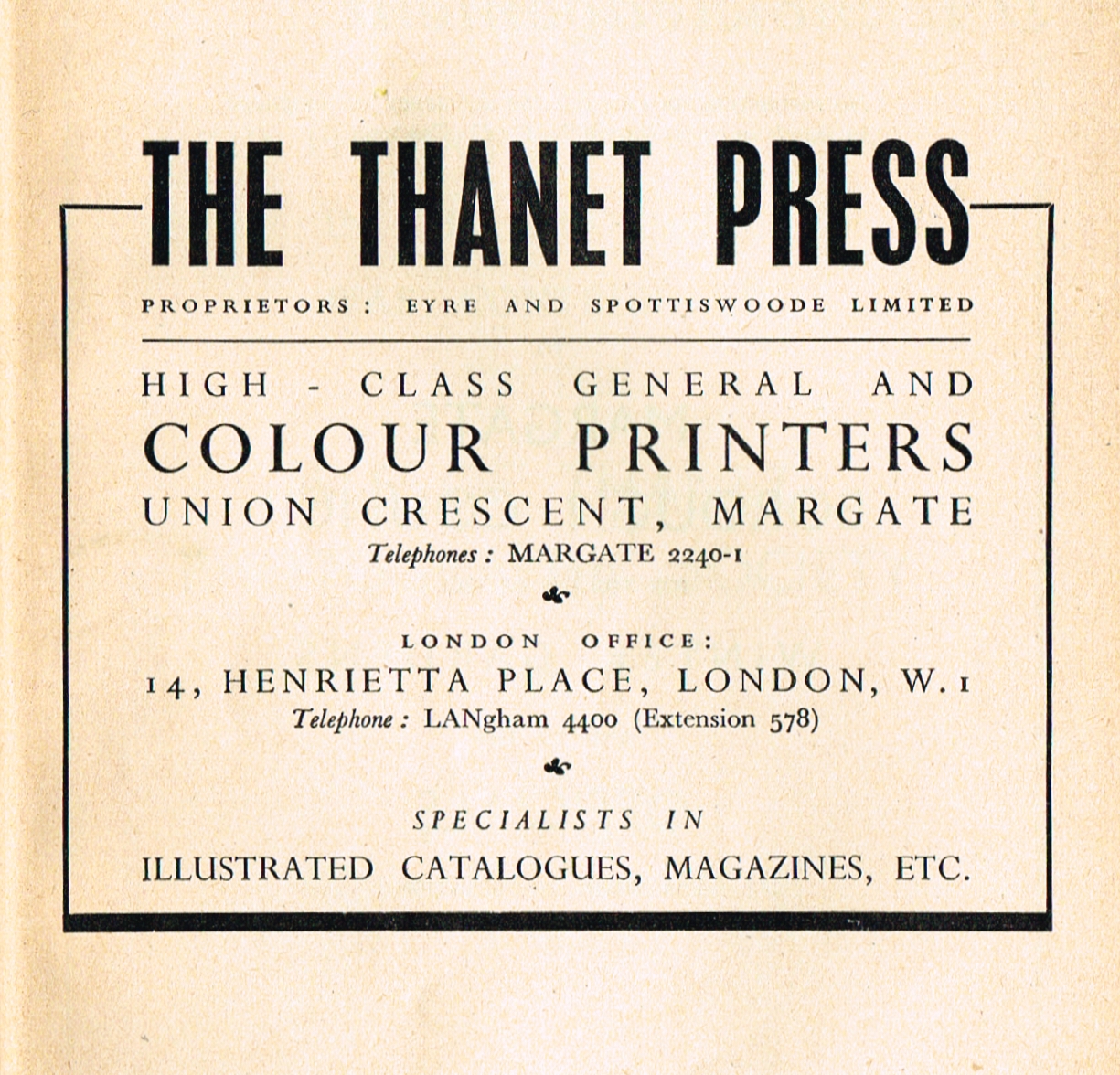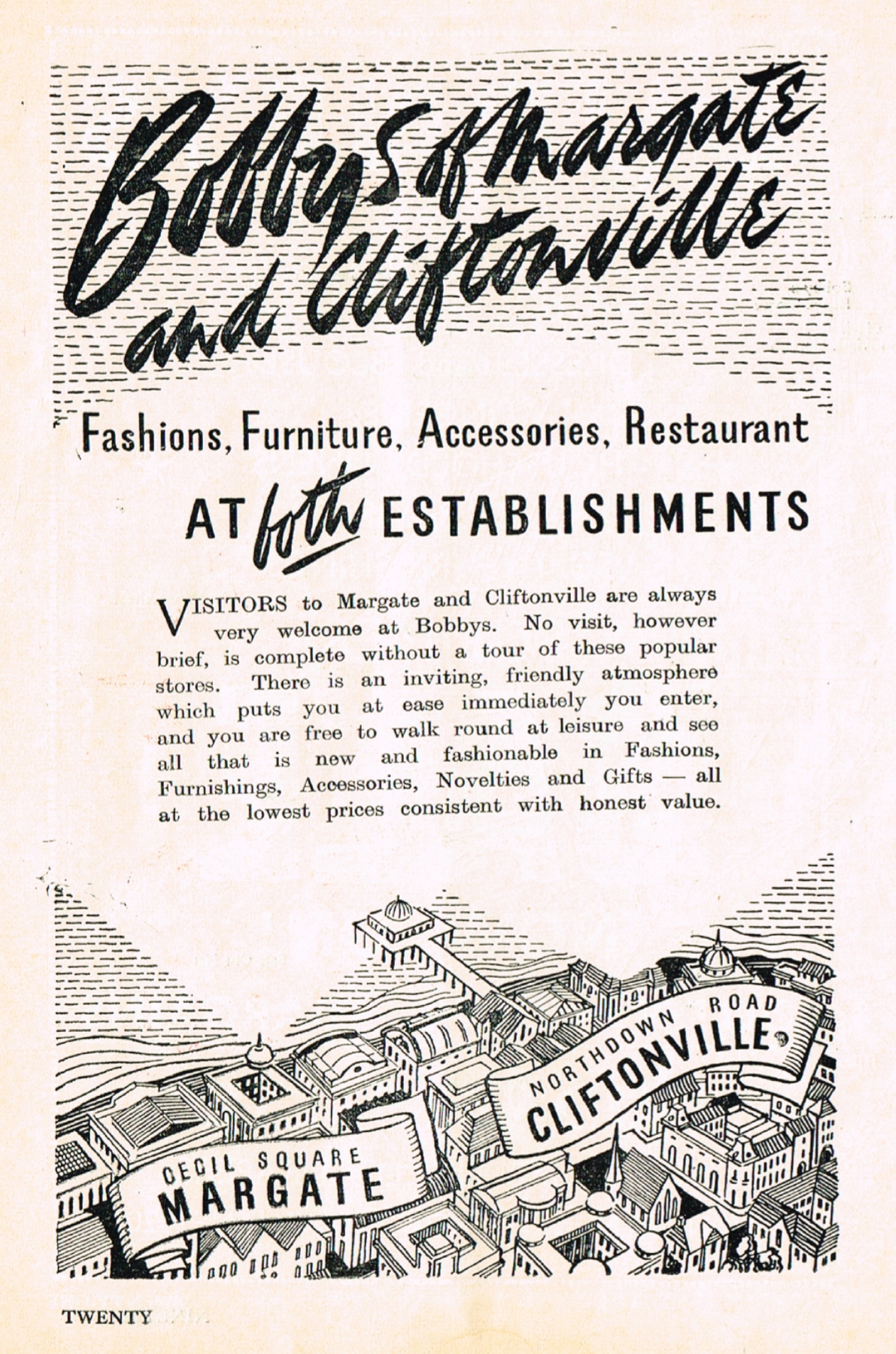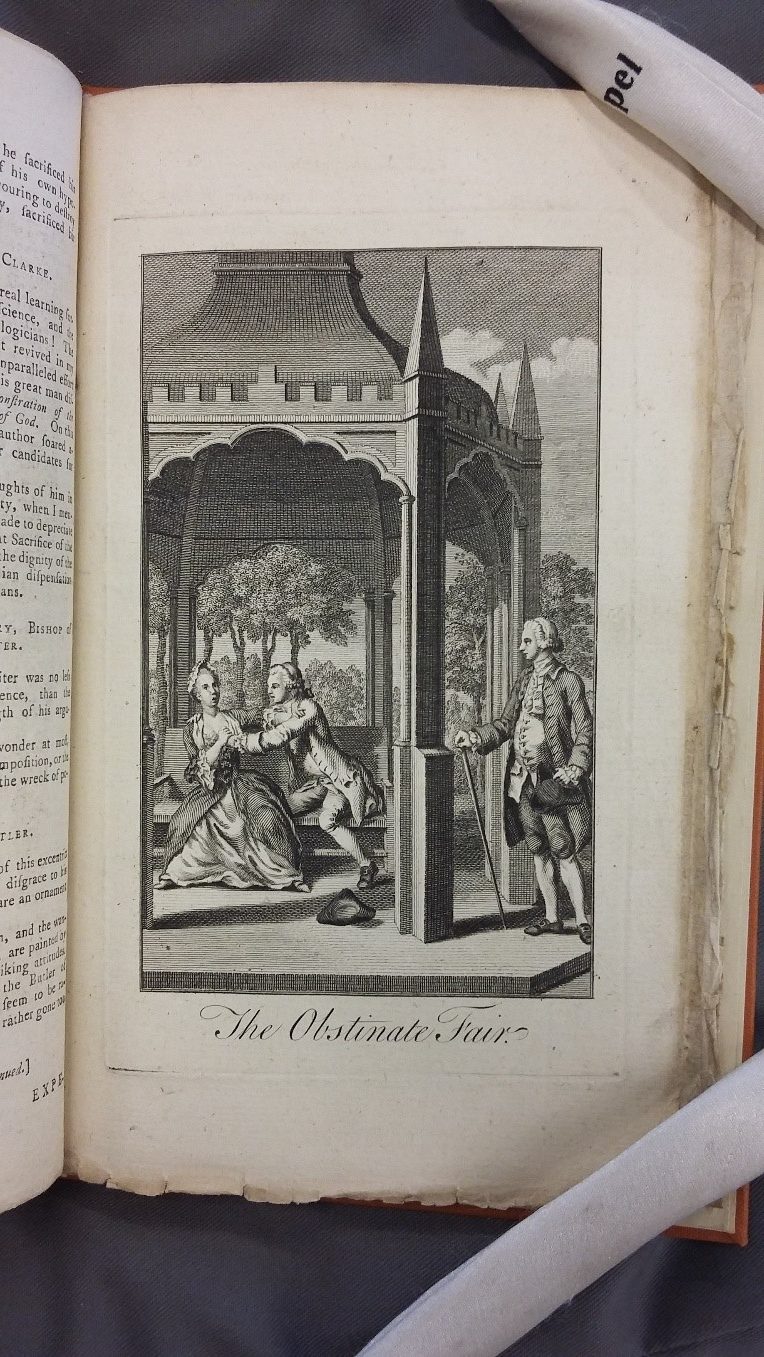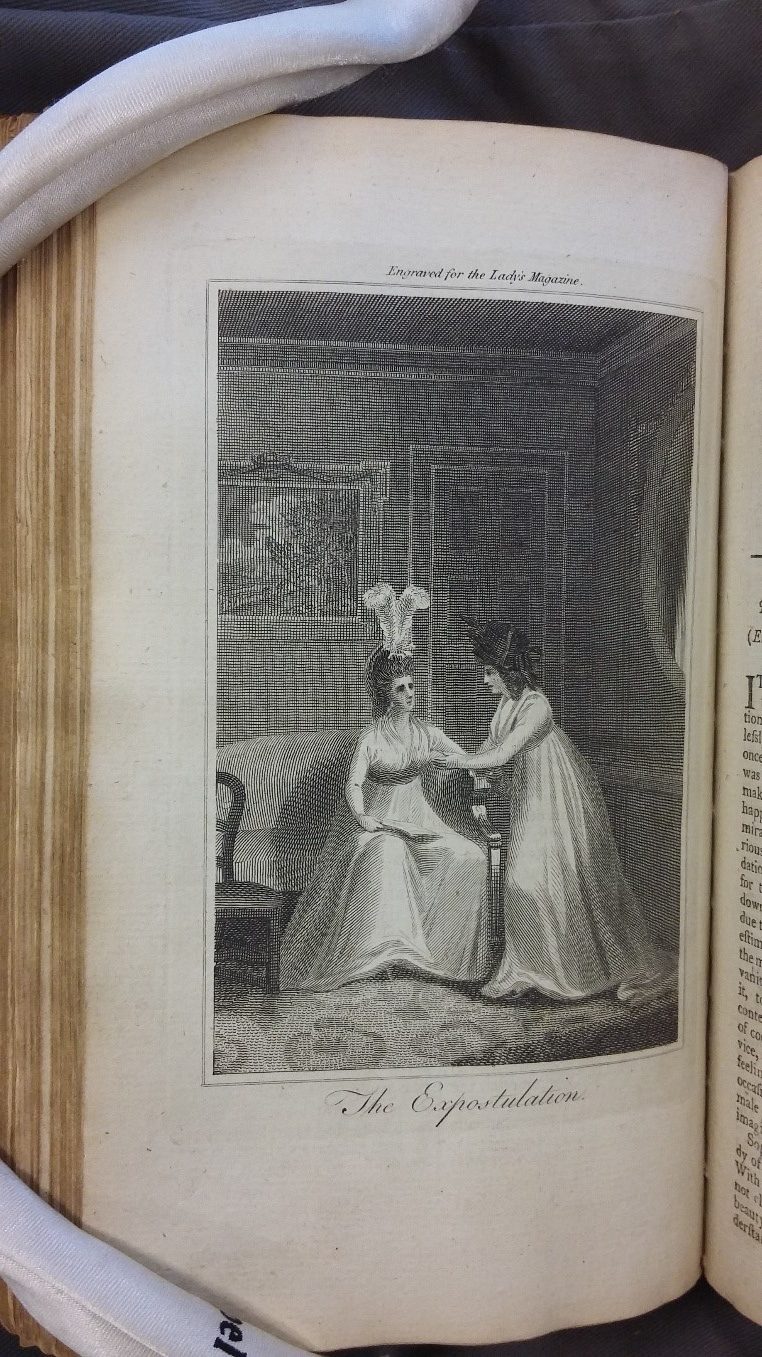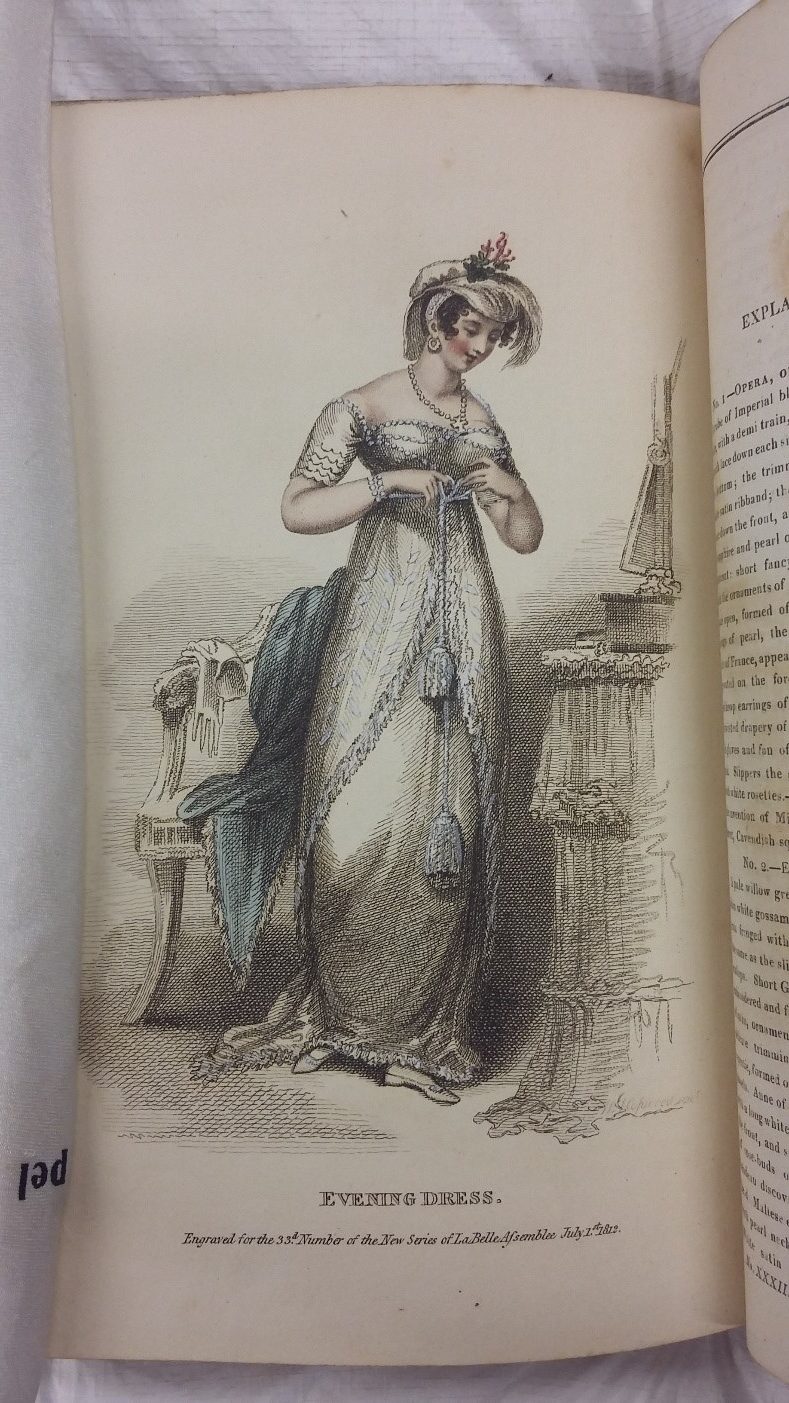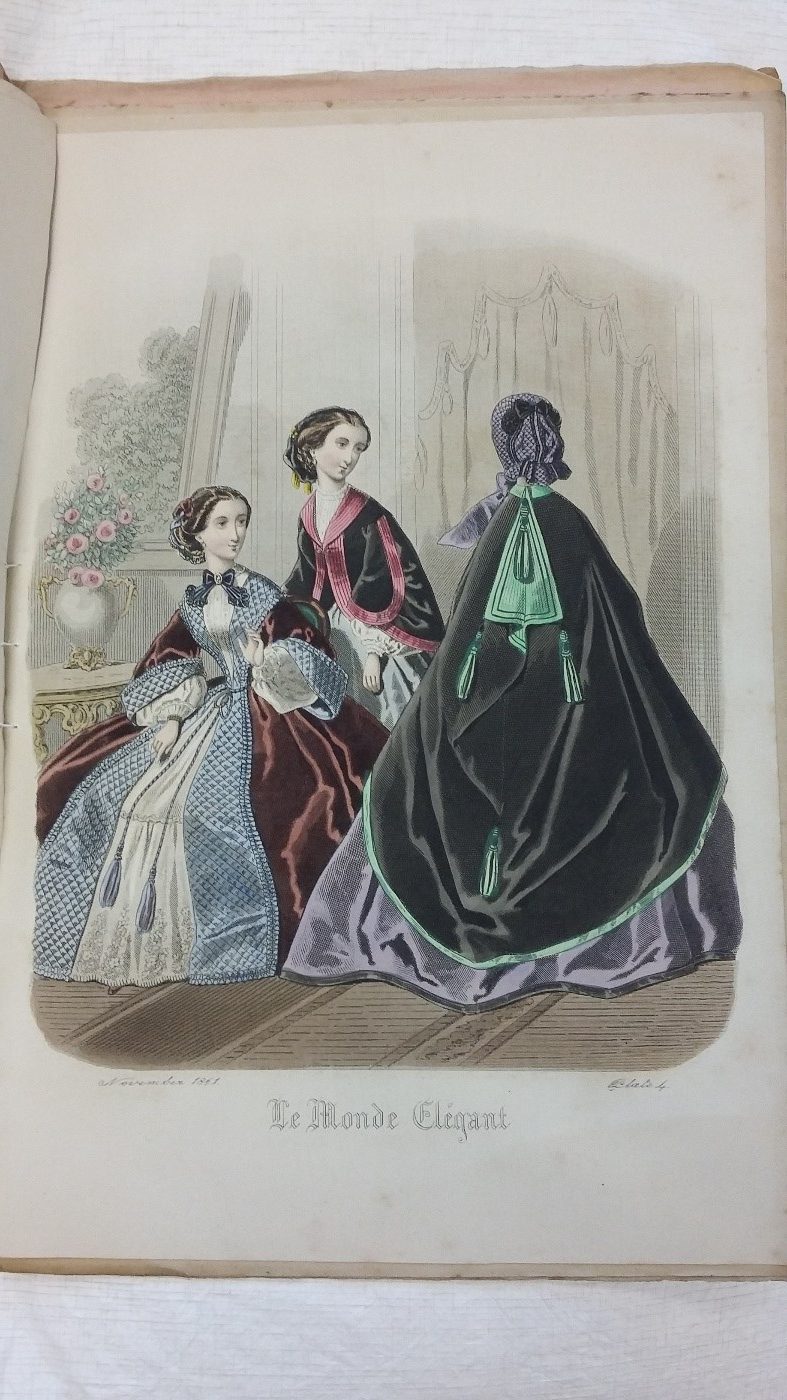Special Collections & Archives has been working with Appletye – an artists’-led organisation based in Margate – to support their mission to record the Isle of Thanet’s rich printing heritage. In lieu of a physical display in Spring 2020 these guest blogs by Dan Thompson and Dawn Cole are our virtual equivalent – we hope you enjoy!
In 1887 Frederick J Bobby, who had been running a small store in Bedford, moved to Margate and took over the Smeeds store, on the junction of Margate High Street and Cecil Square. With business booming, over the next few years Bobby’s acquired neighbouring premises to expand the business. In 1907, he bought a nearby stationers, and print works in Well-close Square.

Bobby & Co’s Union Crescent works, depicted on a 1970s Eyre & Spottiswoode Christmas Card. The original print works were in the building to the left.
In 1909, Bobby demolished the old Smeed’s building, and the other shops he had acquired, to build Margate’s first department store, which would trade until 1972.
And in 1913, the Bobby’s printworks were moved from Well-close Square to a new, purpose-built factory in Union Crescent which still stands today. Next door was Bobby’s furniture factory and a trade showroom, and behind the works was Margate’s old Theatre Royal, which Bobby & Co used as a warehouse. The 1920s and 1930s were good years for Bobby & Co, and they employed famous commercial artist F Gregory Brown to design posters for the stores, as they expanded to other seaside towns. Bobby & Co’s presses worked until the end of the Second World War, printing material for the department store chain as well as for other commercial clients.
In 1947, publishers Eyre & Spottiswoode took over the former Bobby & Co works. Their three London printworks had all been bombed, leaving them with a three metre deep pool of lead in the basement, so they moved their letterpress works to three new sites – Portsmouth, Chiswick and Margate.
From 1953 to 1962, they expanded the Thanet Press and added a range of new buildings, creating almost 4500 square metres of floor space. By 1977, they had over 260 staff and were moving from traditional letterpress to digital typesetting. They printed exam papers, guides to buildings owned by the Ministry of Works (now English Heritage), academic magazines and journals, the order of service for the Queen’s coronation and Prince Margaret’s wedding programme. and packaging for high-end brands like Wedgwood.
For 30 years, Christopher Bradshaw was chief designer for Eyre & Spottiswoode. Passionate about traditional skills and craftsmanship (he was a founder of the Printing Historical Society) he was also an early advocate of computer design. He wrote Design (1964), on the theory of design, and commissioned Michael Twyman’s Printing 1770-1970 (1970), still a definitive book about the print industry.
But by 1985, the print industry was facing radical disruption from new technology and Thanet Press was in trouble. Waddington & Co took over the struggling business and the 200 year connection to the Eyre family was lost.
The company changed hands a few times but by 2011, now owned by the Graham Cumming Group and with staff reduced to just 85, Thanet Press was pushed into administration.
After being left derelict, and nearly being demolished to build social housing, The Thanet Press site has been split up. Part of it is the Carl Freedman Gallery, another will soon be Tracey Emin’s new studios. Upstairs, in the old bindery, is Counter Editions – producing limited edition prints for artists including Anthony Gornley, Bridget Riley, David Shrigley, and Juergen Teller. Printing has happened here for over 110 years.
About the Print Works project:
Print Works is a year-long project from Appletye, an arts and heritage organisation. The project explores the history of the print industry on the Isle of Thanet, taking inspiration from two former companies and the heritage of the sites they occupied at Thanet Press, Union Crescent, Margate and Martell Press, Northdown Road, Cliftonville. At the heart of the project are archives from the two Margate firms, recording the stories of the people who worked there and the work they did.
Using the Print Works archive:
The Print Works archives include hundreds of examples of material printed in a pre-digital age, including much related to Margate, Broadstairs, and Ramsgate. It includes print for seaside hotels, entertainment venues, and tourism businesses.
The archive also includes documents relating to working in the print industry in the 20th century, from apprenticeship indentures to certificates from a print factory’s Horticultural Club. There are documents relating to design, typography, and the move from analogue processes like typography to digital design and print.
The archive is new, so includes primary material not used before in academic research. It is held at a studio in Margate. For more information email dawn@appletye.org
Print Works is supported by a grant from the National Lottery Heritage Fund.

